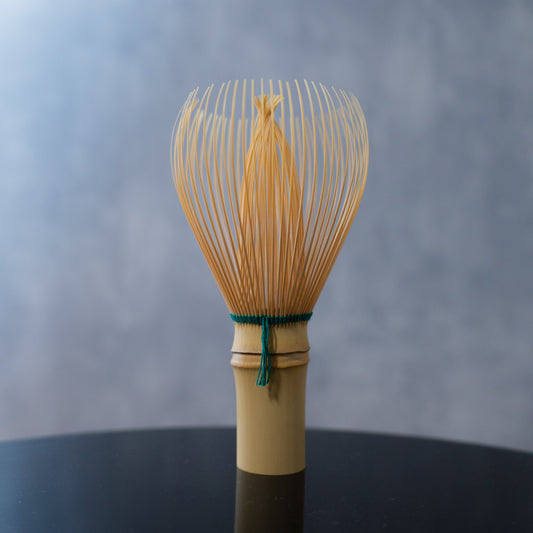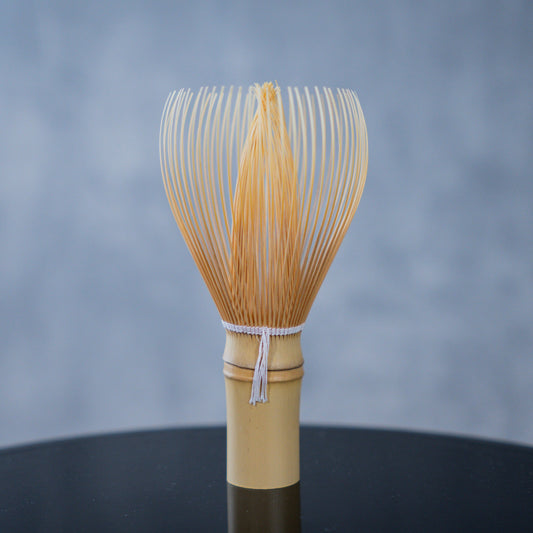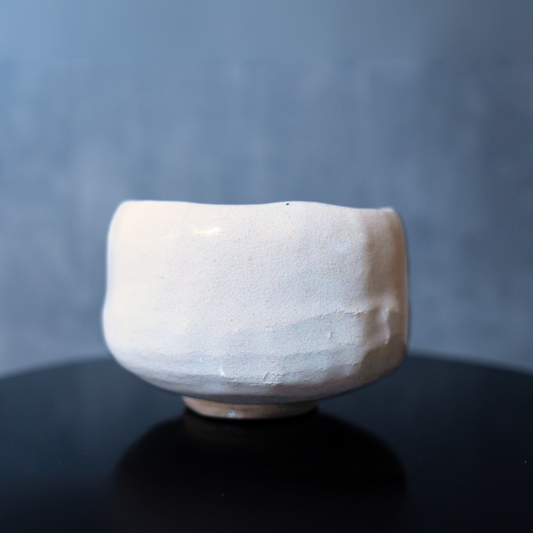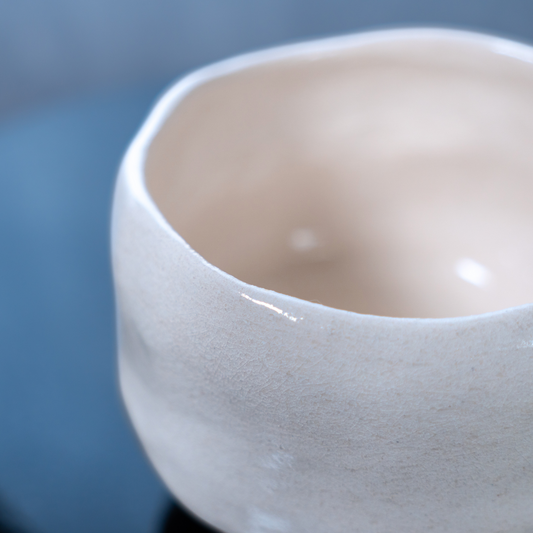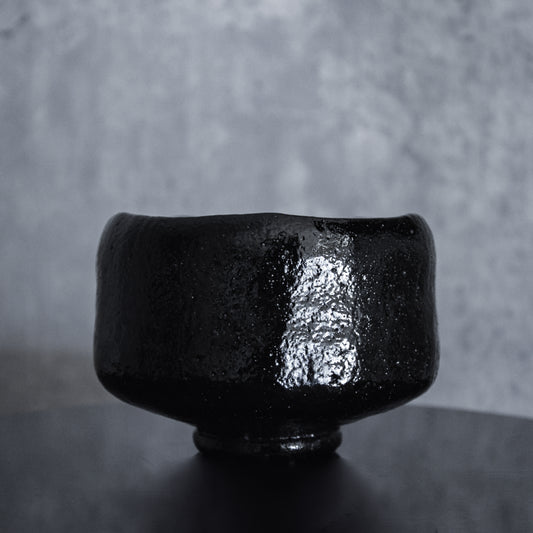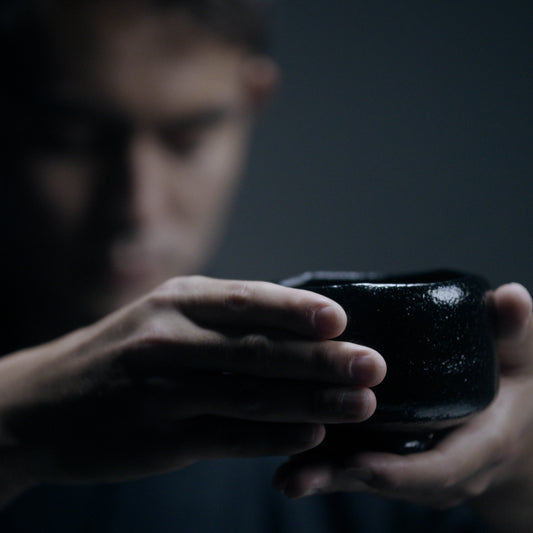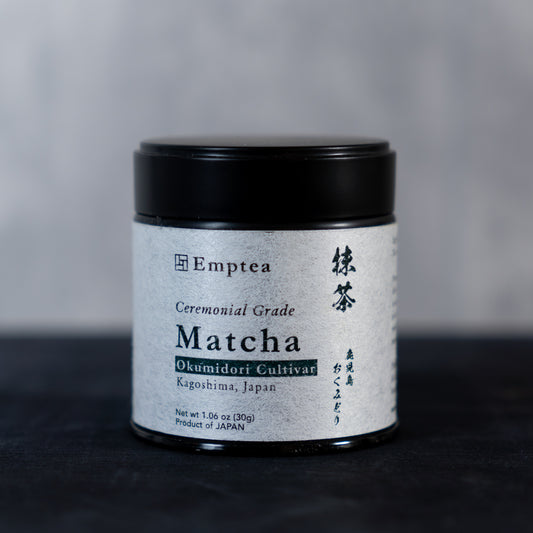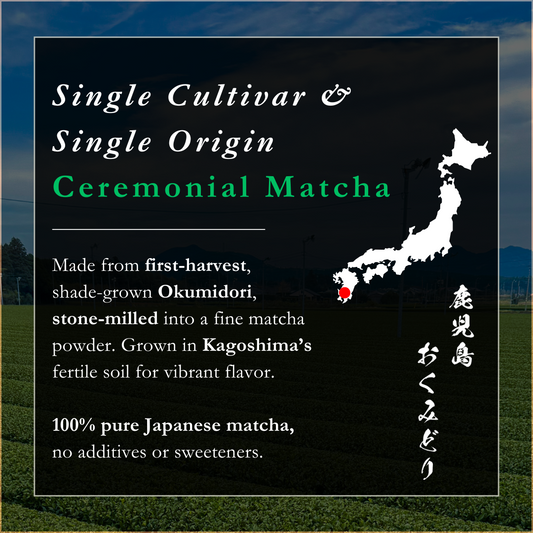Many people try matcha once and decide it's not for them—finding it bitter, grassy, or simply unpleasant. But here's the truth: if your matcha experience was disappointing, you might not have tasted properly prepared ceremonial-grade matcha. The difference between poorly prepared culinary matcha and expertly prepared ceremonial matcha is like comparing instant coffee to a perfectly pulled espresso.
Let's discover how to unlock the true potential of this ancient Japanese tea.
What Makes Ceremonial Matcha Special?
Ceremonial matcha is the highest grade of matcha available. Unlike culinary grades used for lattes, baking, or ice cream, ceremonial matcha is:
- Made from the youngest tea leaves, sometimes hand-picked for premium grades
- Stone-ground at a controlled speed to create optimal particle size variation
- Processed with precise fire-drying techniques (hi-ire) to lock in flavor
- Often carefully blended by skilled tea masters (cha-shi) for a balanced profile
- Vibrant green with no yellow or brown tones
- Characterized by a natural sweetness and complex umami flavor
When prepared correctly, ceremonial matcha offers a smooth, rich taste with subtle sweetness, pleasant umami notes, and a creamy mouthfeel—with minimal bitterness.
The Science Behind Matcha's Flavor
Matcha's flavor profile comes from its unique combination of compounds:
- L-theanine: An amino acid that creates the sweet, umami flavor and promotes calm alertness
- Catechins and EGCG: Polyphenols that contribute to matcha's astringency and slight bitterness
- Chlorophyll: Gives matcha its vibrant color and adds to its fresh taste profile
The temperature, water quality, and preparation technique all affect how these compounds are expressed in your cup.
Essential Tools for Preparing Ceremonial Matcha
To prepare matcha the traditional way, you'll need:
- Chawan (茶碗): A wide, shallow tea bowl that allows proper whisking
- Chasen (茶筅): A bamboo whisk with fine tines specifically designed for matcha
- Chashaku (茶杓): A bamboo scoop for measuring the matcha powder
- Furui (篩): A fine sieve to break up clumps in the powder
Investing in quality tools makes a significant difference in your matcha experience.
Water Quality and Temperature: The Hidden Variables
Just as with sencha, water quality dramatically affects matcha's taste:
Ideal Water for Matcha:
- Soft, filtered water with low mineral content
- Spring water with a slightly alkaline pH
- Avoid distilled or hard water which can make matcha taste flat or bitter
Perfect Temperature: 158-176°F (70-80°C)
Finding your ideal temperature is part of the personal matcha journey
-
Lower temperatures (60°C): L-theanine is more prominently extracted, resulting in a mellower and sweeter flavor.
-
Higher temperatures (80°C): More caffeine is extracted, leading to a stronger flavor and faster onset of the caffeine effects.
💡 Tip: If you don't have a temperature-controlled kettle, bring water to a boil and then let it cool for 3-4 minutes before using.
Step-by-Step Preparation Guide
Step 1: Prepare Your Equipment
- Add 176°F (80°C) hot water to the empty chawan
- Place your chasen in the bowl to warm and soften the bamboo tines
- Let both warm for a few minutes
- Discard the water and wipe the bowl dry
- Prepare your sifter (furui) and chashaku
Step 2: Prepare the Matcha
- Using your chashaku, measure 2g of matcha (approximately 2 scoops)
- Sift the matcha powder through the furui into your warmed chawan to eliminate clumps
Step 3: The Perfect Whisking Technique
- Pour 2oz (60ml) of water at 158-176°F (70-80°C) into the bowl
- Hold the chasen vertically (not at an angle)
- Whisk with a relaxed wrist in a rhythmic, vertical motion
- Continue whisking briskly with a snapping motion until a fine froth forms
- The ideal foam should have tiny, uniform bubbles like good cappuccino foam
💡 Tip: The whisking motion is meant to be meditative—focus on the rhythm and let it clear your mind.
Step 4: Appreciate and Enjoy
- Take a moment to admire the vibrant color and fine froth
- Hold the chawan in your right hand, place it on your left palm
- Turn the bowl clockwise twice before drinking
- Sip mindfully, allowing the flavors to develop on your palate
Common Mistakes That Make Matcha Bitter
If your matcha tastes bitter, you might be making one of these errors:
- Using water that's too hot: Higher temperatures over-extract bitter compounds
- Starting with culinary-grade matcha: Lower grades are inherently more bitter
- Using old or improperly stored matcha: It should be used within 4 weeks of opening and stored in an airtight container in the refrigerator
- Inadequate whisking: Insufficient whisking leads to clumps and uneven flavor
- Using too much powder: The ideal ratio is 2g powder to 60ml water
Beyond Bitterness: The Japanese Concept of Kōkū Chōri
Is your matcha too bitter to drink? Well, it's actually supposed to have some bitterness—because that's part of its complex character.
In Japan, there's a concept called 口腔調理 (kōkū chōri), or "in-mouth cooking/processing." This unconscious practice particularly applies to the traditional tea ceremony, where wagashi (traditional Japanese sweets) are consumed before drinking matcha. This isn't just a pleasant pairing—it's a deliberate culinary technique.
If you really want to understand matcha, try it straight—no sweeteners, no lattes. In Japan, people eat wagashi first to balance the slight bitterness of even high-quality matcha and appreciate its depth. Some matcha enthusiasts don't even need sweets for their daily matcha, as they've learned to appreciate the natural complexity of the flavor profile.
This concept of in-mouth flavor processing helps the palate prepare for and better appreciate matcha's complexity, transforming what might initially seem like a negative attribute into part of a holistic experience.
Traditional Pairings to Enhance Matcha
The wagashi served in tea ceremonies are carefully chosen to complement matcha:
- Namagashi (生菓子): Soft, seasonal sweets often made with sweet bean paste that are considered the highest grade in tea ceremony
- Mochi (餅): Traditional rice cakes including daifuku and ichigo daifuku (strawberry-filled mochi) that pair wonderfully with matcha
- Yokan (羊羹): Sweet bean jelly that balances matcha's astringency
- Higashi (干菓子): Dry, sweet confections made from sugar and rice flour
- Monaka (最中): Crisp wafers filled with sweet bean paste
These traditional sweets create the perfect contrast to matcha's complex flavor profile.
The Mindful Matcha Experience
In Japanese tea ceremony (茶道, sado), matcha preparation is not just about the drink—it's about mindfulness and presence. Even when making matcha at home:
- Allow yourself to be fully present in the preparation process
- Focus on the whisking motion as a form of meditation
- Observe the transformation of powder and water into frothy tea
- Appreciate the complete sensory experience—the color, aroma, texture, and taste
This mindful approach enhances both the flavor experience and the calming effects of matcha.
The Takeaway
Properly prepared ceremonial matcha is a revelation—complex, smooth, and energizing without being overwhelmingly bitter. The precision and care involved in preparation are not mere formality but essential steps to unlock its true character.
Next time you prepare matcha, take your time with each step and consider trying it with a traditional sweet beforehand. The result won't just be a better-tasting cup—it will be a moment of calm in your day and a connection to centuries of Japanese tea culture.
Shop on Amazon US



